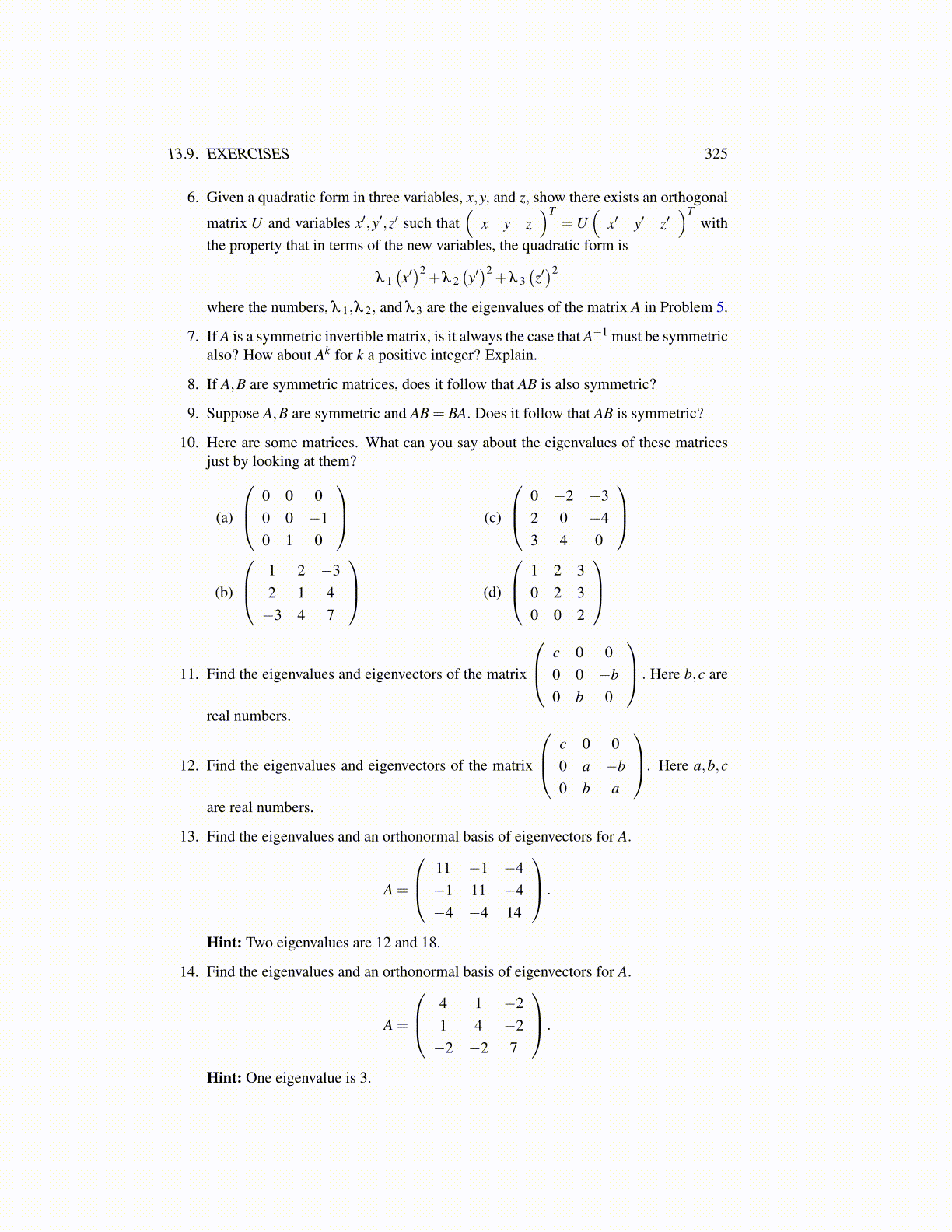
13.9. EXERCISES 325
6. Given a quadratic form in three variables, x,y, and z, show there exists an orthogonal
matrix U and variables x′,y′,z′ such that(
x y z)T
= U(
x′ y′ z′)T
withthe property that in terms of the new variables, the quadratic form is
λ 1(x′)2
+λ 2(y′)2
+λ 3(z′)2
where the numbers, λ 1,λ 2, and λ 3 are the eigenvalues of the matrix A in Problem 5.
7. If A is a symmetric invertible matrix, is it always the case that A−1 must be symmetricalso? How about Ak for k a positive integer? Explain.
8. If A,B are symmetric matrices, does it follow that AB is also symmetric?
9. Suppose A,B are symmetric and AB = BA. Does it follow that AB is symmetric?
10. Here are some matrices. What can you say about the eigenvalues of these matricesjust by looking at them?
(a)
0 0 00 0 −10 1 0
(b)
1 2 −32 1 4−3 4 7
(c)
0 −2 −32 0 −43 4 0
(d)
1 2 30 2 30 0 2
11. Find the eigenvalues and eigenvectors of the matrix
c 0 00 0 −b0 b 0
. Here b,c are
real numbers.
12. Find the eigenvalues and eigenvectors of the matrix
c 0 00 a −b0 b a
. Here a,b,c
are real numbers.
13. Find the eigenvalues and an orthonormal basis of eigenvectors for A.
A =
11 −1 −4−1 11 −4−4 −4 14
.
Hint: Two eigenvalues are 12 and 18.
14. Find the eigenvalues and an orthonormal basis of eigenvectors for A.
A =
4 1 −21 4 −2−2 −2 7
.
Hint: One eigenvalue is 3.